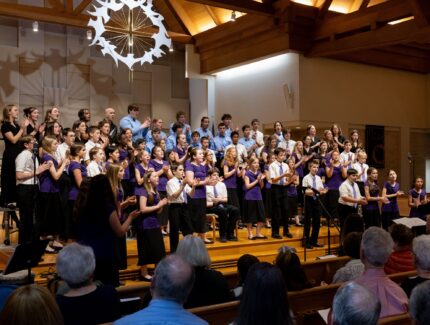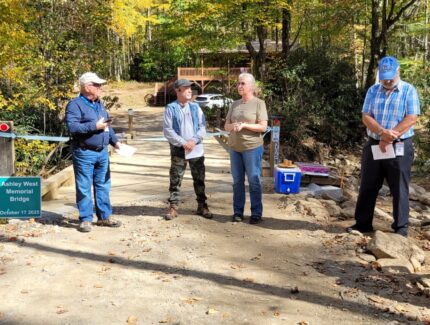
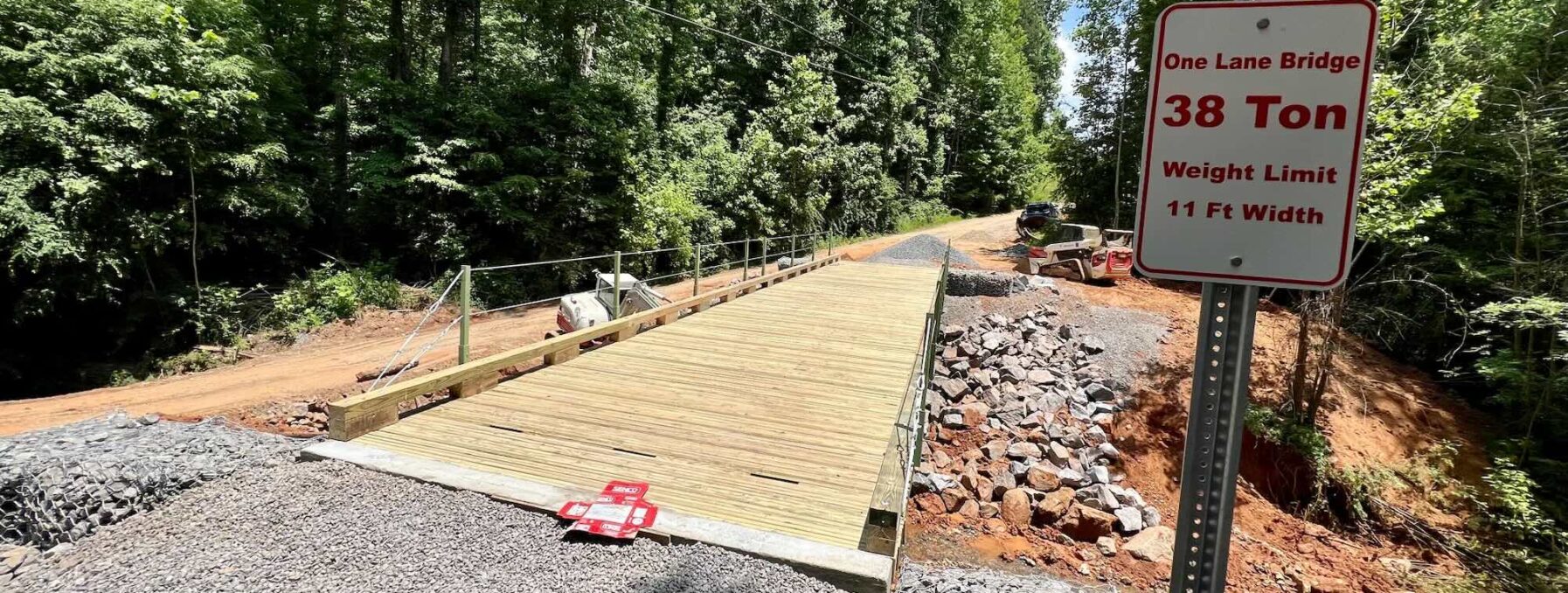
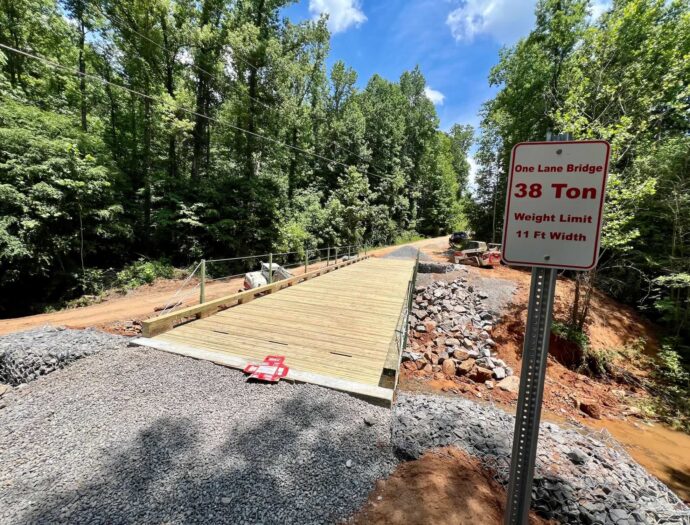
June 12, 2024
“This bridge? It’s Christmas”
Twenty-nine families in Iron Station, North Carolina, are sleeping better at night. And their daytimes got better, too, after Mennonite Disaster Service (MDS) volunteers constructed a new 60-foot bridge to carry them in and out of their beloved community.
With grants provided by Samaritan’s Purse, Lutheran Disaster Response, Presbyterian Disaster Assistance, and other generous donors to purchase materials, MDS volunteers provided the labor.
Situated on a private dirt road that crosses Reed Creek, the residents were temporarily trapped in their homes in January, when floodwaters washed out the culvert—again.
Local emergency management officials built a temporary bridge wide enough for small all-terrain vehicles (ATVs) to cross—but not cars.
People like Robert Hudson and his wife had to wait for the weather to be dry enough so the road wouldn’t be covered with water. Whether they were going to work, driving to the doctor, or attending church, sometimes they’d either have to travel via ATV—or stay home.
“This bridge? It’s Christmas,” said Hudson. “I mean, we live on a dirt road and most of us live there by choice. It’s quiet. You’re out in the country.”
But the volume of water running through Reed Creek has been growing over the years, and Hudson watched it wash out culvert after culvert, makeshift bridge after makeshift bridge. “I don’t think we’ll ever have to worry about it again,” he said. The concrete-supported bridge span is designed to hold 40 tons—more than a fully-loaded fire truck with water.
When a fire broke out in one of the homes several months ago, fire crews had to truck water via small ATV emergency vehicles over the temporary bridge. Nobody was injured but the home was a total loss.
People in Iron Station like their remote location—but they do want help to reach them in an emergency. “It was an unnerving feeling, watching water over the culvert, knowing we were stranded,” said Hudson.
“When it rains, we’d get real nervous—the road was always flooded over or washed out, and we’d get stuck,” agreed Samantha Mitchem, who lives with her mother in the community she describes as “everybody tucked into nooks and crannies—and loving the quiet.”
Another resident, Christian Hickman, after 25 years of living in Iron Station with her son and her husband, who is disabled, had trouble believing they were getting a new bridge—one that will last. “We won’t have to worry anymore,” she said.
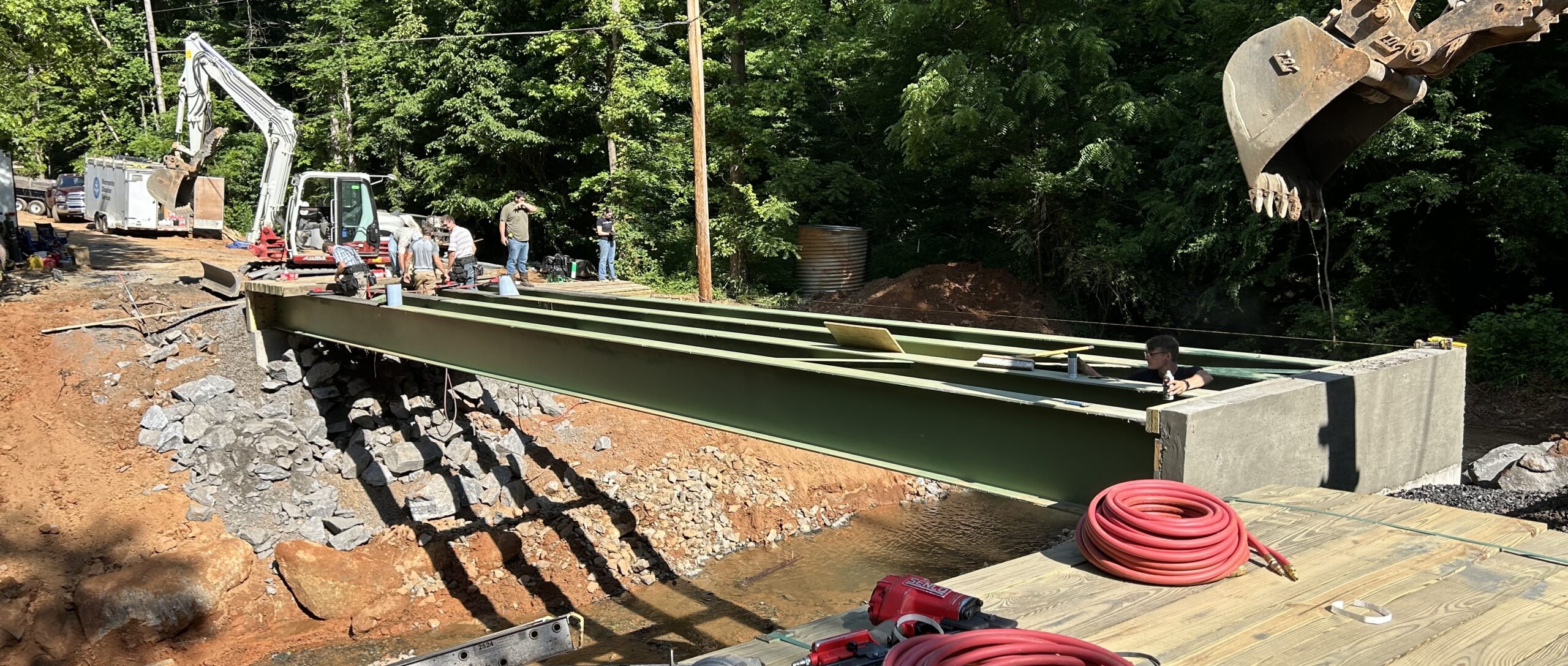
MDS bridge program has evolved
MDS volunteers—who built their first bridge in Lincoln County, West Virginia, in 2015—have now built more than 130 bridges. The bridge in Iron Station—coincidentally also in another Lincoln County—is the first MDS bridge in North Carolina.
Over the years, JZ Engineering, based in Harrisonburg, Virginia, under the leadership of longtime MDS partner Johann Zimmermann, has honed the design so that volunteers find the bridges easier to build in the field.
Zimmermann also regularly works with engineering students who volunteer with MDS, building bridges as well as examining the structural integrity of existing bridges.
Students Micaiah Landis, who is studying engineering at Eastern Mennonite University, and Cade Meredith, who is studying materials science at Virginia Tech, volunteered to help construct the bridge in Iron Station.
This summer, they’re also clocking more than 3,500 miles driving to previously-built MDS bridge to see how they’re holding up.
“So far we’ve visited 39 bridges of varying lengths, and they’re all still standing,” said Landis. “We’re focusing on the 2015-16 ones.”
Checking for everything from holes in the decking, to rot in the wood, to corrosion underneath, the students will report their findings to Zimmermann, who regularly reevaluates design and materials.
“It’s a cool opportunity,” said Meredith. “We don’t get to do this kind of hands-on learning in the classroom.”

Susan Kim, MDS Writer

